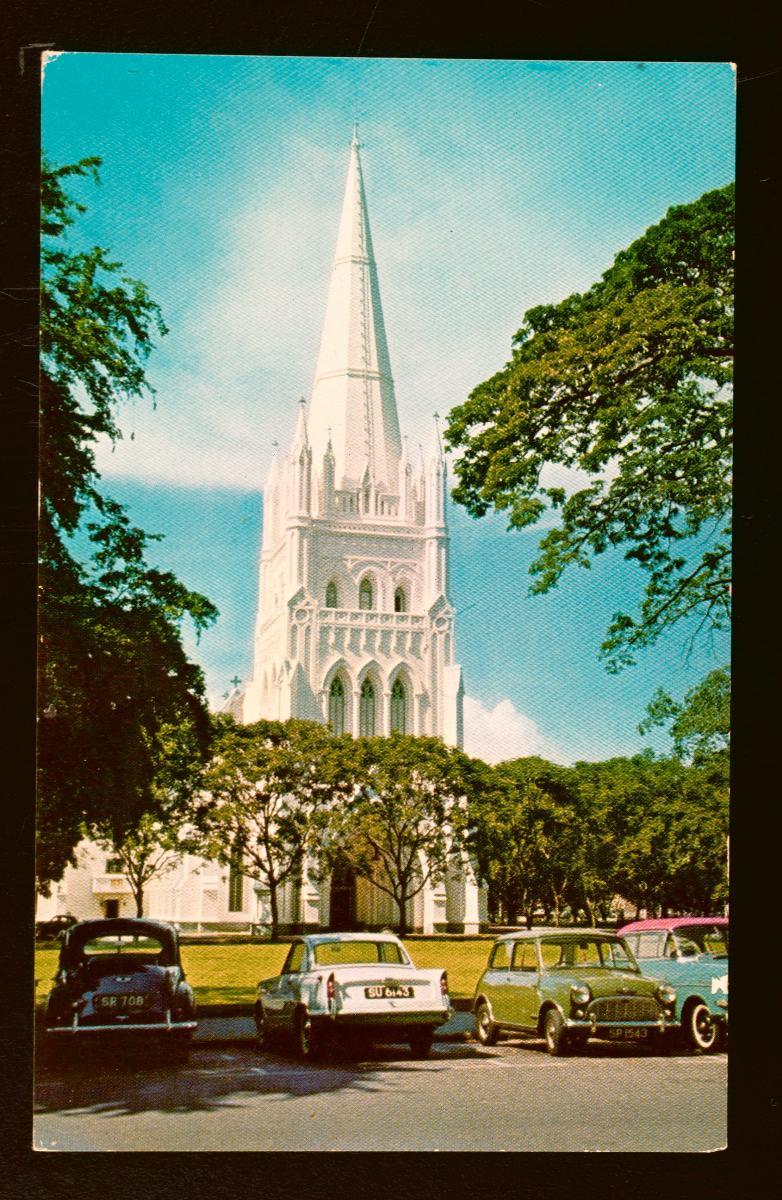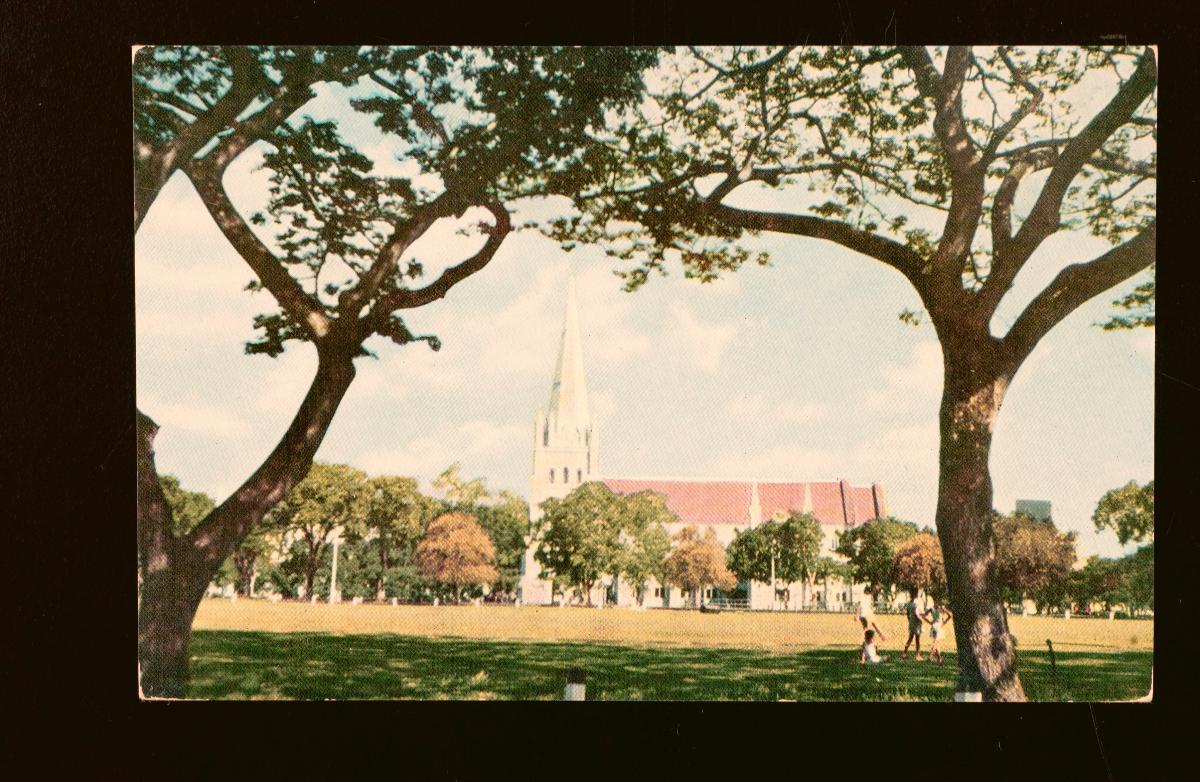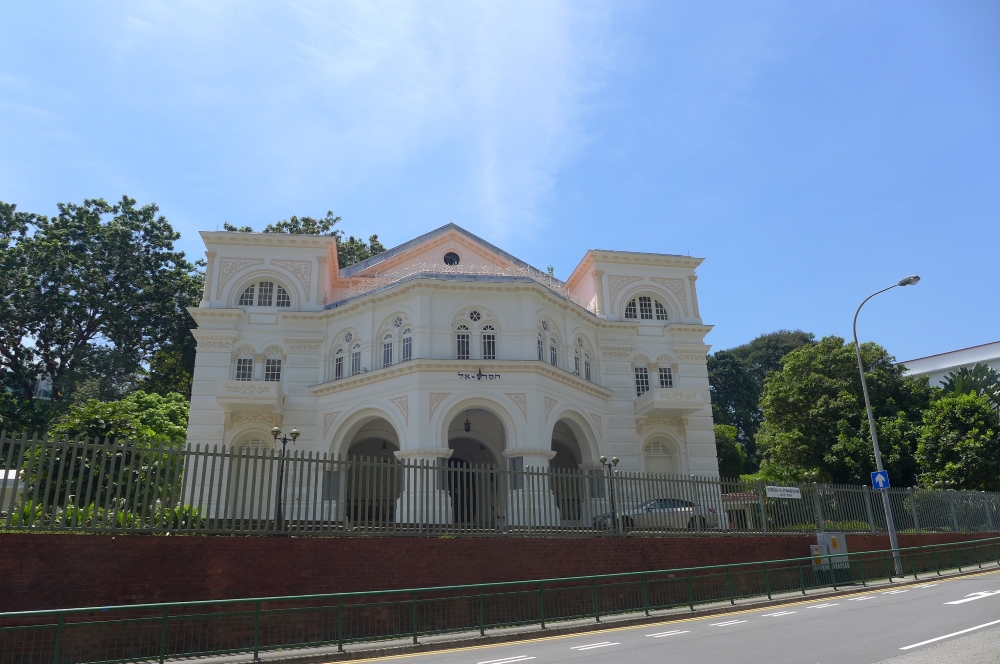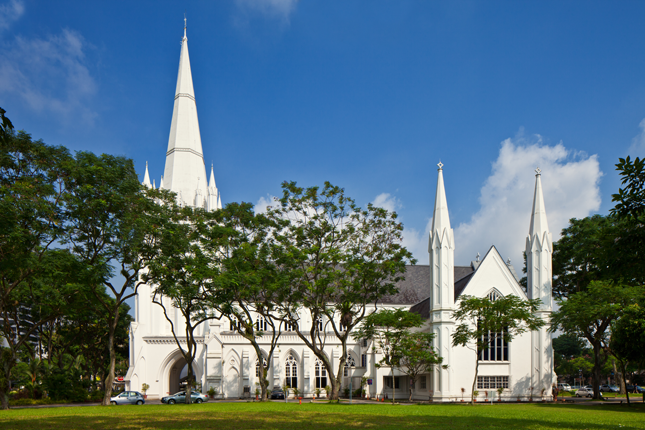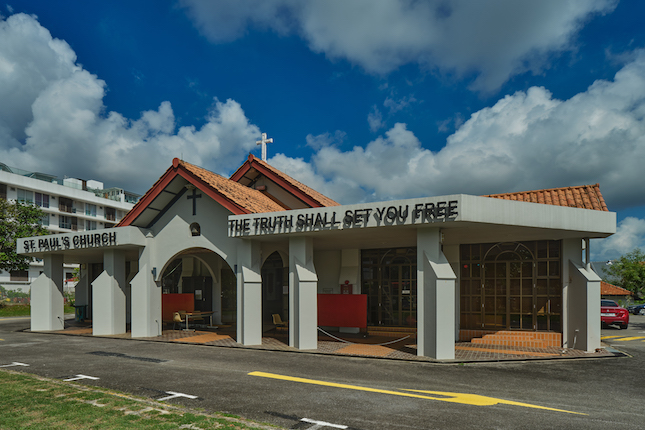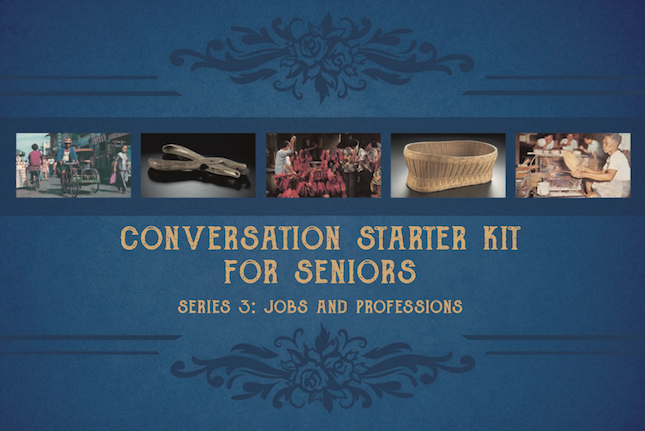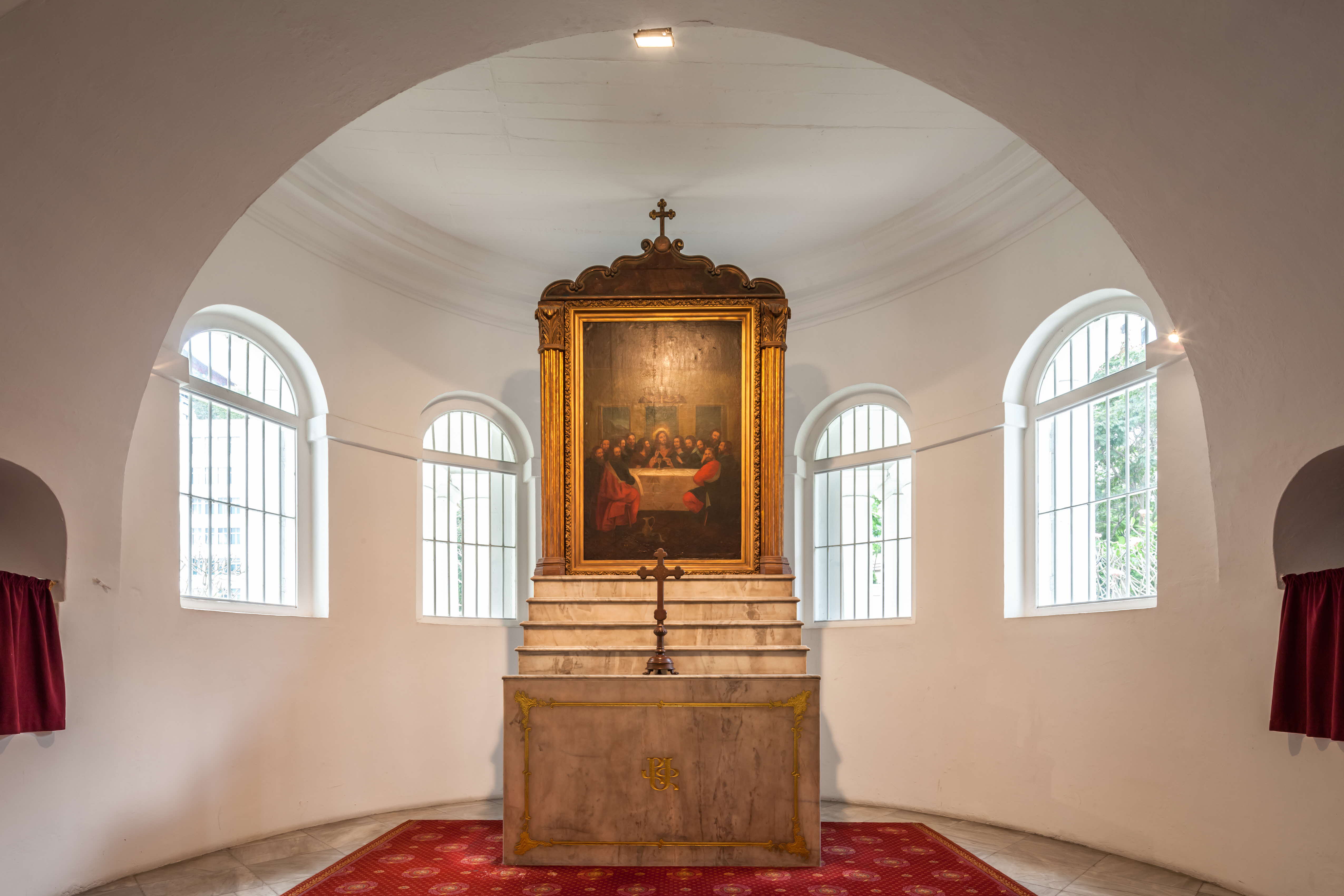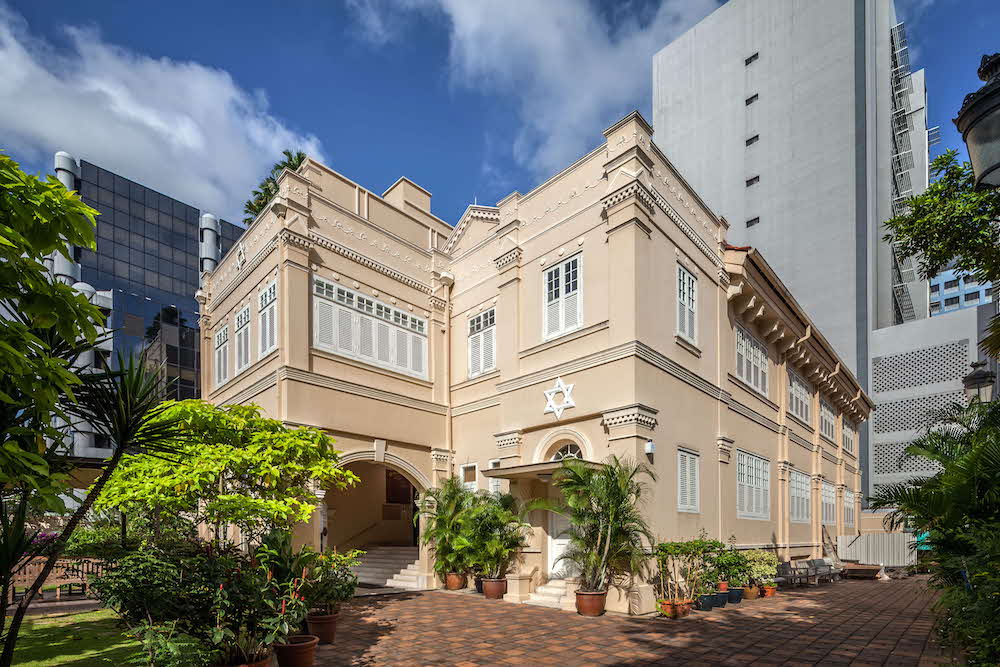
Read more about PSM’s efforts to safeguard Singapore’s built heritage in MUSE SG Vol 14, Issue 1.
Rebuilt: 1856–61
Restored: 2018–19
Located at the same site since 1836, St Andrew’s Cathedral is the oldest Anglican church in Singapore. The present neo-Gothic structure was constructed in the 1850s, after the demolition of the previous building as it had been found to be structurally unsound due to lightning damage.

National Museum of Singapore Collection
The old bell
In 1889, Captain J.S.H. Fraser of the East India Company presented the cathedral with a peal of eight bells in commemoration of the 70th anniversary of Raffles’s landing in Singapore. Each bell is named after an apostle of Jesus: Matthew, James, John, Paul, Peter, Thomas, Bartholomew and Andrew. They are rung every Sunday as a call to worship as well as for weddings, funerals, Easter and Christmas. For more than a century, the tolls of the bells have been an invisible but integral part of the city’s aural-scape, contributing to the civic district’s heritage of sounds.

Photo courtesy of National Heritage Board
However, the full potential of these bells was undiscovered all this time—until 1973 when Laith Reynolds, an Australian bellringing expert, visited the cathedral during a transit on the way to Indonesia. Reynolds was armed with rich experience in change ringing—the traditional means of bell ringing in Anglican churches by swinging the bells through an arc of 360 degrees or more to achieve a fuller sound. By controlling the speed at which they are swung, the tuned bells can be rung in various sequences, producing a rich cascade of sound. And the more bells there are, the more complex and majestic are the sounds produced.
During his visit, Reynolds noticed that the set of bells in St Andrew’s Cathedral had in fact been cast to the change ringing scale, but the bells were being chimed instead. The bells were cast without suspension loops, with flat tops bolted to the frame. Their clappers were tied so that they had to be struck to chime instead of being swung. This was a less expensive way of hanging the bells, but also one that limited them from making a full swing to create the glorious wash of sound that they had originally been made for.
He thus embarked on a decades-long journey of working with the cathedral to restore this precious set of bells in order to perform the exquisite art of change ringing. He had the support of the local clergy, who also firmly believed in the historical, symbolic and spiritual significance of church bells whose peals signify the reverberation of the church beyond its grounds.
After a series of delays and setbacks, eventually in December 2018 the eight bells were shipped off to the foundry John Taylor and Co. in Loughborough, England, to be refurbished. An additional five new bells were cast. At the same time, the cathedral’s bell tower underwent repair and restoration works to accommodate the new set of bells. Six months later in June 2019, the set of 13 bells—freshly tuned and with new headstocks—returned home to St Andrew’s Cathedral.



The heaviest of the set is the Andrew bell, which weighs a whopping 1,297 kg, while the lightest is Simon, cutting a relatively slim figure at 198.5 kg. The first-ever change ringing with the bells in Singapore took place on 11 August 2019. The bells at St Andrew’s Cathedral are the only complete set of bells capable of change ringing in Southeast Asia.

About The Preservation of Sites and Monuments
The Preservation of Sites and Monuments (PSM) is a division under the National Heritage Board. Its primary role is to safeguard Singapore’s built heritage by identifying monuments that are of “historic, cultural, traditional, archaeological, architectural, artistic or symbolic significance and national importance”, and recommending them to the state for preservation. Gazetted National Monuments are accorded the highest level of protection by law. National Monuments comprise religious, civic and community structures, each representing a unique slice of history in multicultural Singapore. Read more about Preservation of Sites & Monuments, and National Monuments here.





